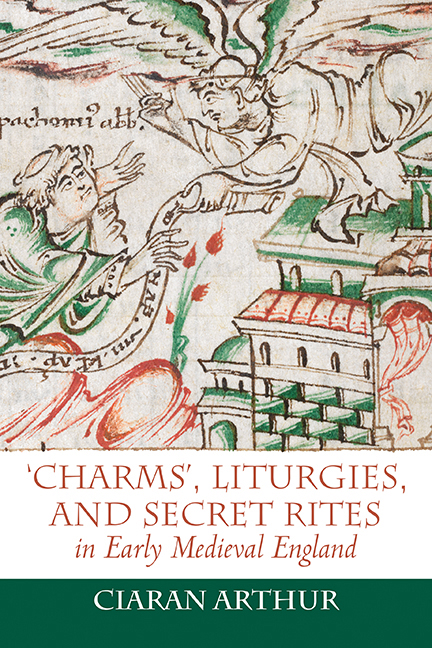Book contents
2 - By the Power Vested in Me: Galdor in Authorised Rituals
from Part I
Published online by Cambridge University Press: 27 July 2018
Summary
‘galdor took on a Christian and even liturgical meaning’.
There are twelve surviving Anglo-Saxon rituals that instruct a reader to write or recite a galdor. These are found in four manuscripts, at least three of which were written at major ecclesiastical centres in the late tenth and eleventh centuries. The word galdor is used in these manuscripts to refer to an explicitly Christian ritual performance. As seen in Chapter 1, many texts use galdor to signify dangerous and forbidden spiritual customs, but these manuscripts show that the term was also used in rituals with liturgical formulas and objects. Indeed, these galdru actually counter the same hostile forces that are connected to the noun in other proscriptive texts, such as ‘lyblace’ (poison), ‘egsa’ (monster), ‘lad’ (enemy), ‘drycraft’ (witchcraft), ‘malscrunge’ (enchantments), and ‘leodrunan’ (sorceresses). The meaning of galdor in these rituals reflects the poetic uses of the term in the Exeter and Vercelli Books to denote Christian wisdom, discernment, divine revelation, and sacramental mystery. Nearly all of these prescriptions were written in high-status monasteries associated with the Benedictine Reform, and this suggests that this ritual practice was endorsed by some ecclesiastics in explicitly Christian, liturgical contexts. This chapter reconsiders how some Christian scribes understood galdor in the late Anglo-Saxon period when these rituals were written down.
Ten out of twelve rituals that prescribe a galdor are found in two of these four manuscripts, which are books of healing. Many of these texts contain medical recipes as well as ritual utterances, gestures, and liturgical prayers. As such, the galdor forms one part of the ritual process and it is closely associated with other liturgical prayers and objects. The difference with some galdru is that their speech is unintelligible, possibly even to those who were required to perform them. However, it may be the case that their obscure language was precisely what protected them from being easily accessed, so that only those who could read them correctly could unlock their power.
- Type
- Chapter
- Information
- Publisher: Boydell & BrewerPrint publication year: 2018



